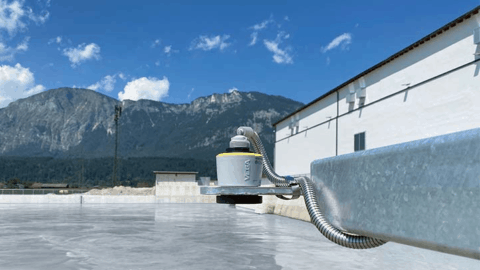The opportunity to power passenger vehicles with renewable energy is an exciting prospect, given transport is Australia’s largest single source of emissions, but the technology is facing a significant speed bump when it comes to the availability of charging infrastructure. While Australia’s vast size poses challenges for the rollout of charging infrastructure, trenchless technology can help fast-track this process by providing a cost-effective and sustainable solution for the installation of charging stations.
The expansion of e-mobility infrastructure comes with enormous challenges, not only for power suppliers and manufacturers of the charging technology, but also for governments and consumers.
To prevent a lack of charging infrastructure from becoming an obstacle to electric vehicle (EV) adoption, and ensure Australia can reduce its greenhouse gas emissions, there is an urgent need for the rapid expansion of nationwide charging infrastructure.
A number of projects and trials are improving access to efficient charging stations. The $15 million Chargefox Electric Vehicle Charging Network Project spans five states and comprises 22 locations on major driving routes.
After receiving $6 million in funding from the Australian Renewable Energy Agency, the project commenced in October 2018 and the final station was completed in January 2021.
The rollout of this network means that drivers of EVs will be able to drive between some major Australian cities without risking an empty battery, and being powered completely by locally-generated renewable energy, it puts minimal pressure on the existing electricity grid.
 Australia is still limited in its public charging facilities however, and more work needs to be done to bridge the charging infrastructure gap to make long-distance EV travel a reality and reduce range anxiety.
Australia is still limited in its public charging facilities however, and more work needs to be done to bridge the charging infrastructure gap to make long-distance EV travel a reality and reduce range anxiety.
Trenchless technology provides an intelligent, economical and sustainable solution for the rapid installation of EV charging station infrastructure.
This is because, in contrast to traditional open cut construction methods, trenchless construction methods eliminate the need to dig up the surface along the entire pipe or cable route.
 The major advantages of going trenchless include:
The major advantages of going trenchless include:
• Valuable surfaces and resources are saved because costly excavation and restoration work are no longer necessary
• Minimal impact on local residents and businesses as a result of reduced traffic disruption and smaller construction footprint
• Short construction and set-up times enable greater efficiency and adherence to tight deadlines
• Significantly lower direct and indirect costs compared to open cut construction
• Trenchless construction methods help preserve the surrounding environment and potential wildlife habitats, as well as reducing carbon dioxide emissions, fuel consumption and noise pollution
• Reliable and compliant construction methods that have been tried and tested for decades
Considering that 80 per cent of the costs in conventional underground utility infrastructure installation projects can be related to civil engineering, it’s easy to imagine the potential savings if surfaces and resources can be protected by utilising minimally invasive trenchless technology techniques.
 Boosting the uptake of electric vehicles (EVs) is an important pathway to ensuring federal and state governments can achieve their climate targets.
Boosting the uptake of electric vehicles (EVs) is an important pathway to ensuring federal and state governments can achieve their climate targets.
It makes all the more sense if the construction methods themselves are carried out in an ecologically sensible and less disruptive manner, and do not lead to the further deterioration of a municipality’s environmental balance.
In addition to the economic and ecological advantages of trenchless technology, its nominal community impact can make a major contribution to general public acceptance of EVs – this is important considering that Australia is lagging behind many of its international counterparts in EV sales.
 An economical and environmentally friendly construction method
An economical and environmentally friendly construction method
Intelligent trenchless solutions are not only economical for installation of multiple charging points, but also for the construction of individual charging points; different systems and methods can be used depending on the type and length of the individual connections to the distribution network, the capacity and also the number of charging points.
Trenchless technology offers fast and simple underground installation of the protection pipes for power and control cables, from the connection point (sub-distribution) to the charging station and between the charging stations.
With the minimally invasive keyhole technique, the construction pit can be used as the foundation of the charging station, and trenchless methods are suitable for almost all types of soil, including rock.
House connections for the power supply of the charging stations can also be installed without trenches, and the range of applications can also be expanded to charging points at hotels, shopping malls or on the street, and cables for large triple chargers, e.g. at motorway service stations.
German manufacturer TRACTO-TECHNIK develops, builds and distributes machines and accessories for the underground installation and trenchless renewal of pipelines.
These trenchless technology solutions are applied for the construction of pipeline networks for water, sewer, gas, electricity, telecommunications, district heating and fibreoptic networks.
Using the GRUNDOMAT soil displacement hammer, the complete range of essential services can be installed and renewed without trenches.
One of the highlights in the TRACTO-TECHNIK horizontal directional drilling machine family is the GRUNDODRILL 18ACS, which works highly efficiently in alternating soils as well as in the hardest rock, offering distinctively reduced operating costs and construction times compared to similar drilling rigs.
The cost pressures in civil engineering led to the development of another TRACTO-TECHNIK innovation: the award-winning GRUNDOPIT K, which can be used for installing, repairing and renewing property service connections via a keyhole access pit with a maximum diameter of only 650mm.
The new GRUNDOPIT PS40 is designed for the challenge of developing the urban underground network, its slim construction ideal for applications in inner city areas.
This Sponsored Editorial, is brought to you by Traco. For more information, visit www.tracto.com/au

















